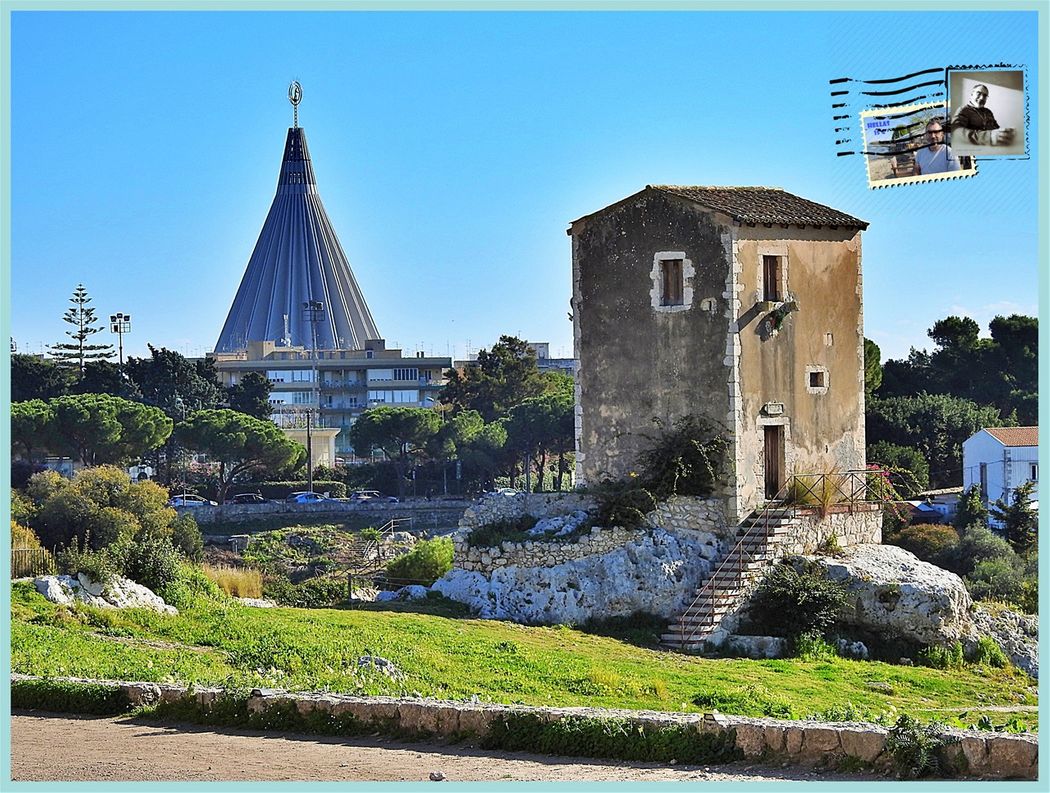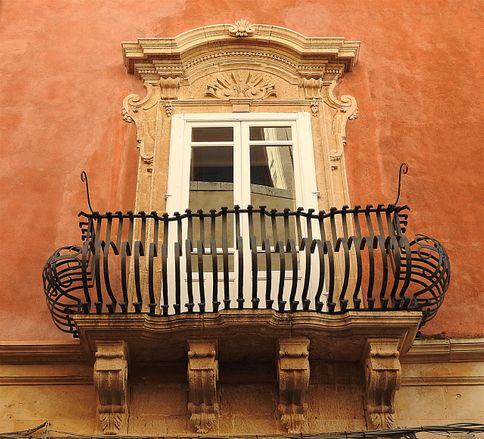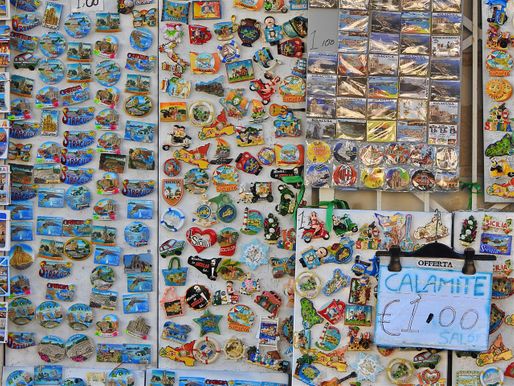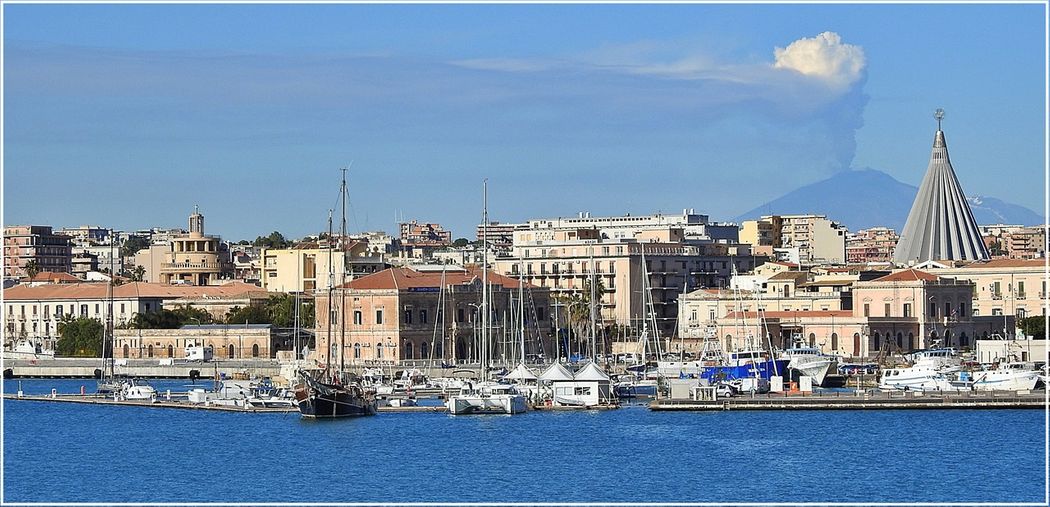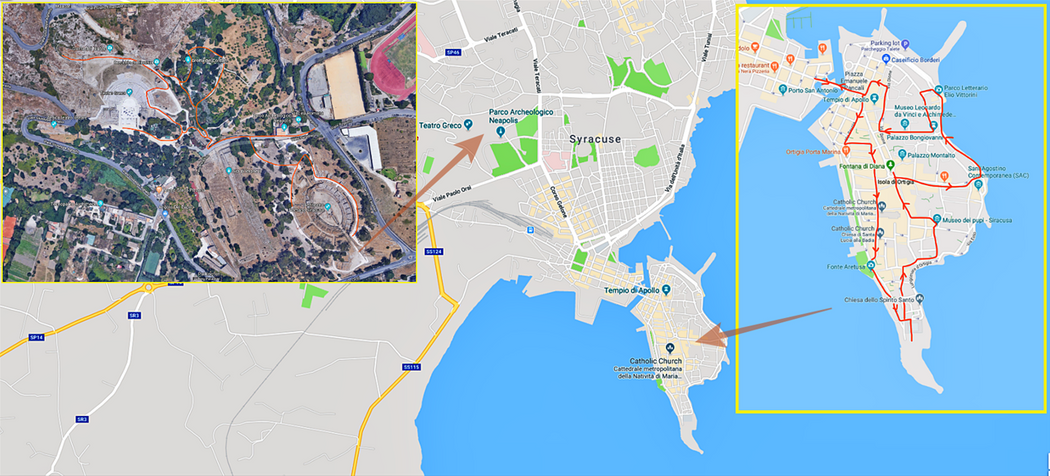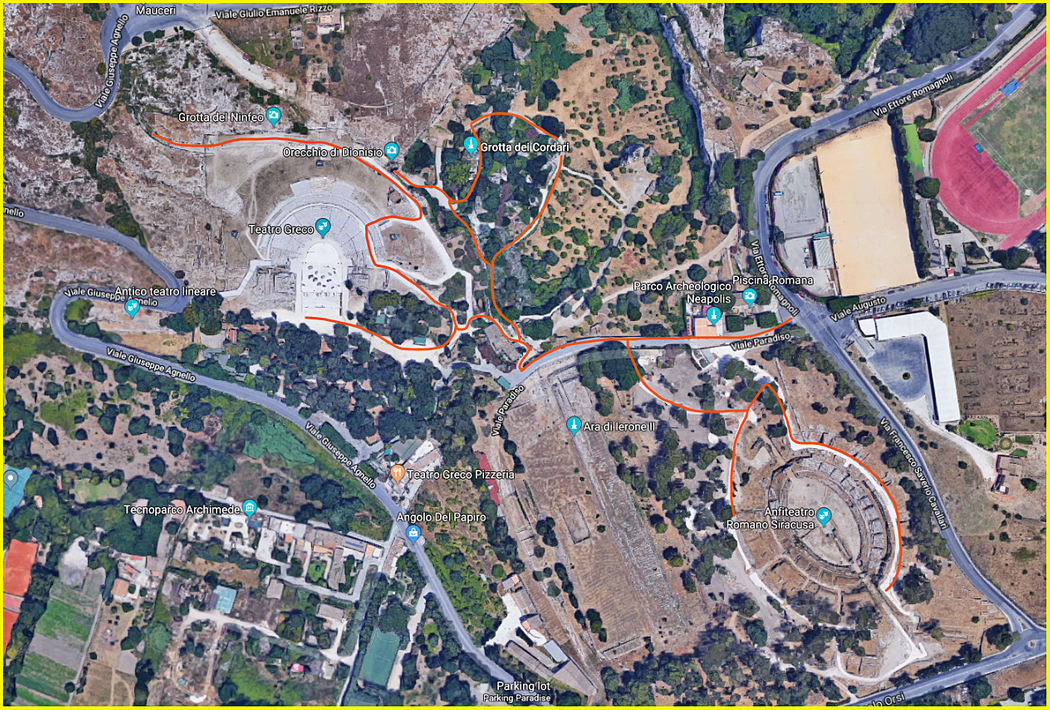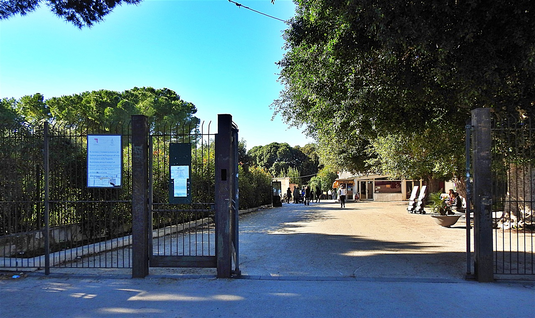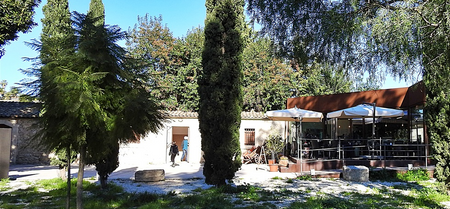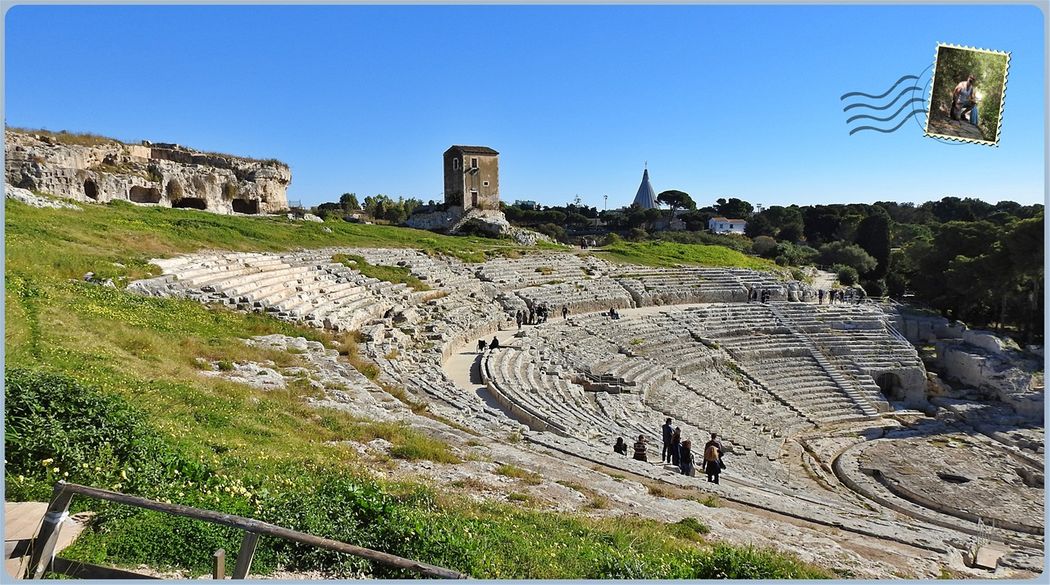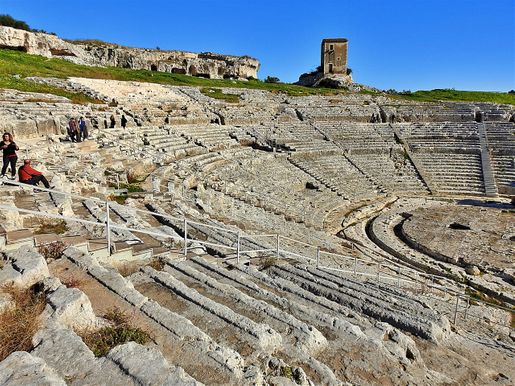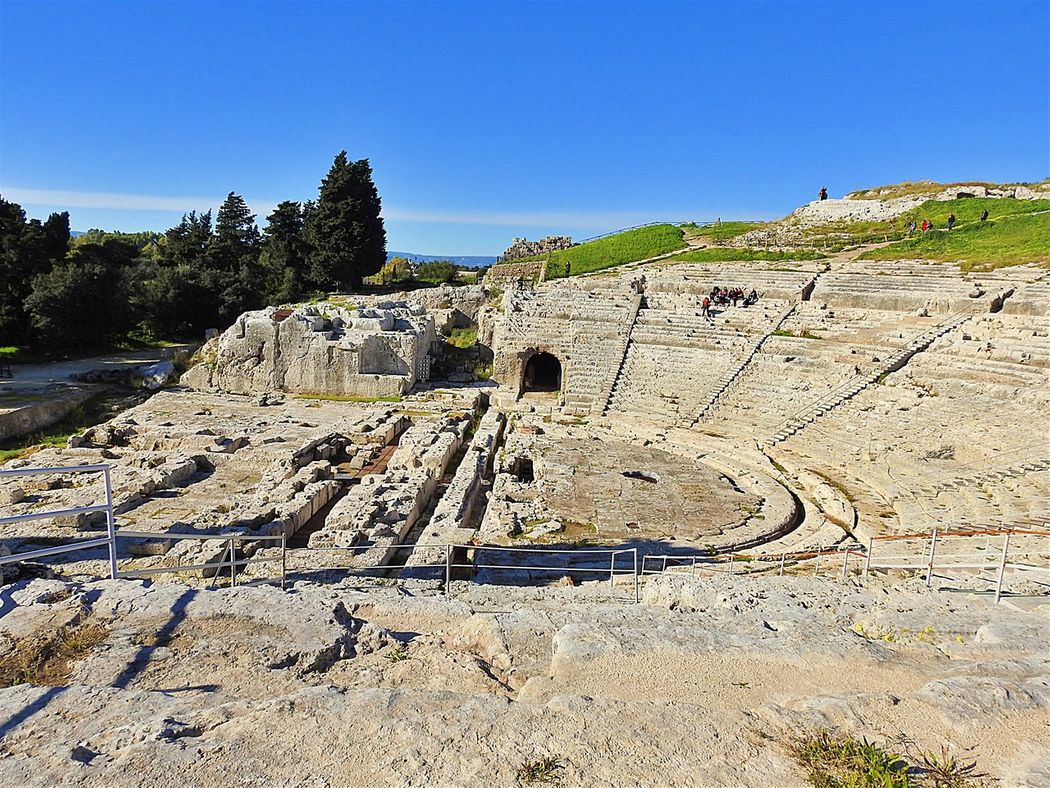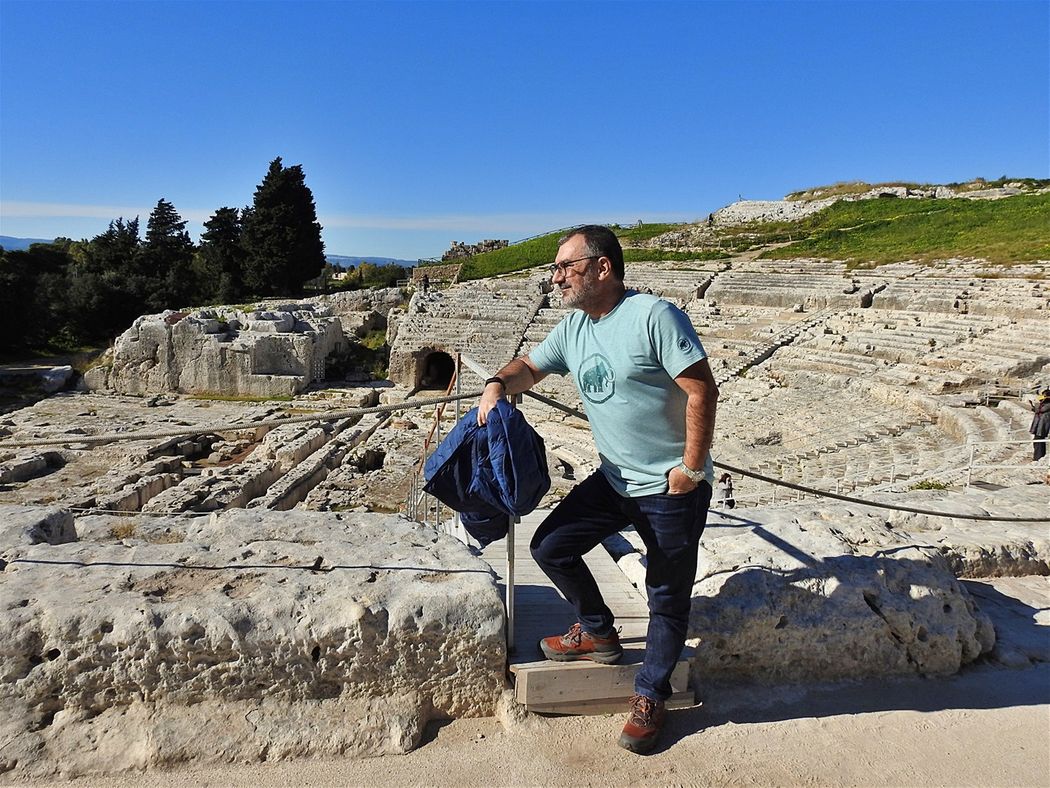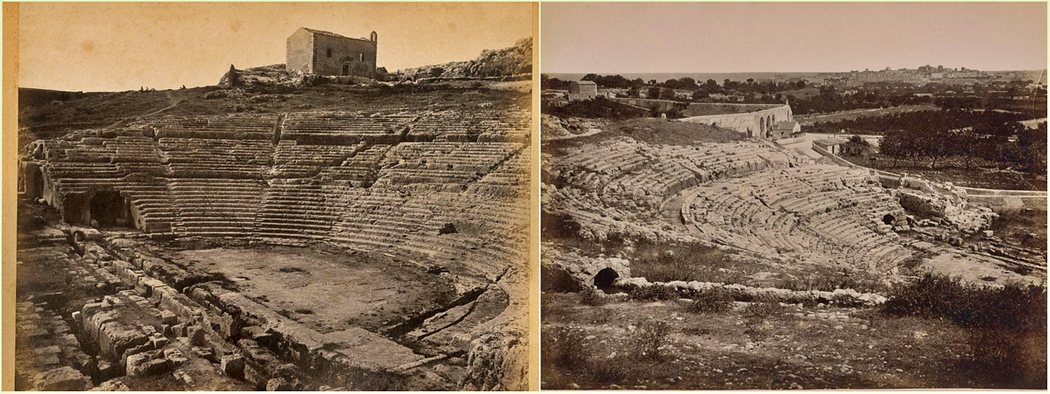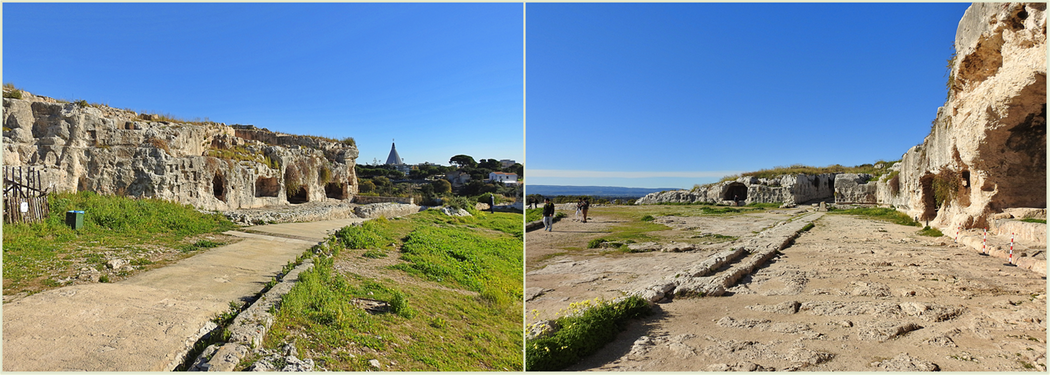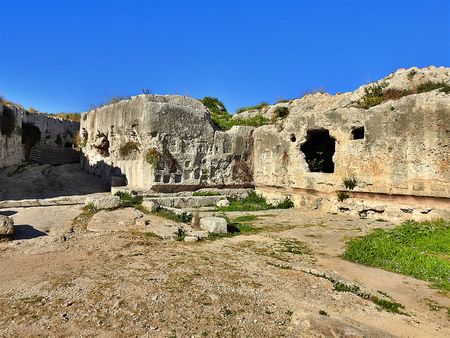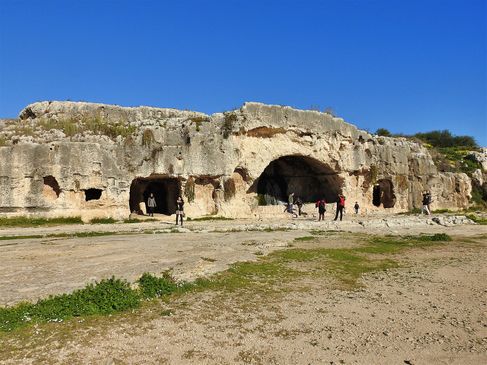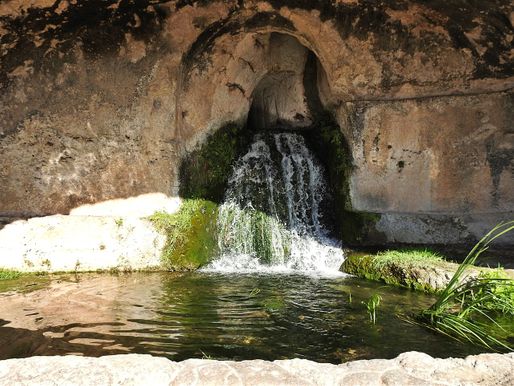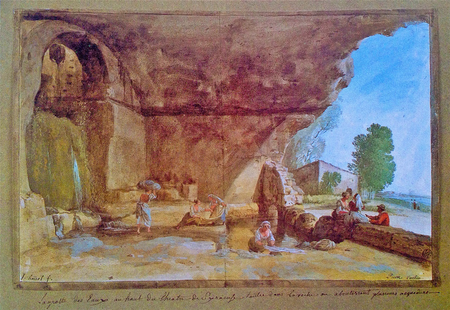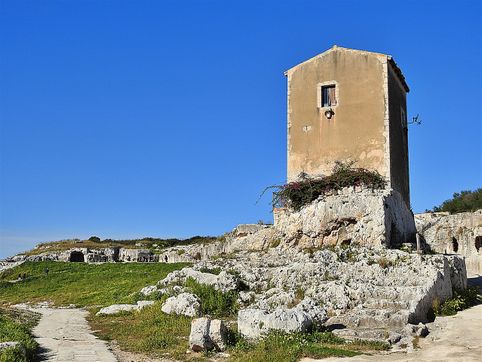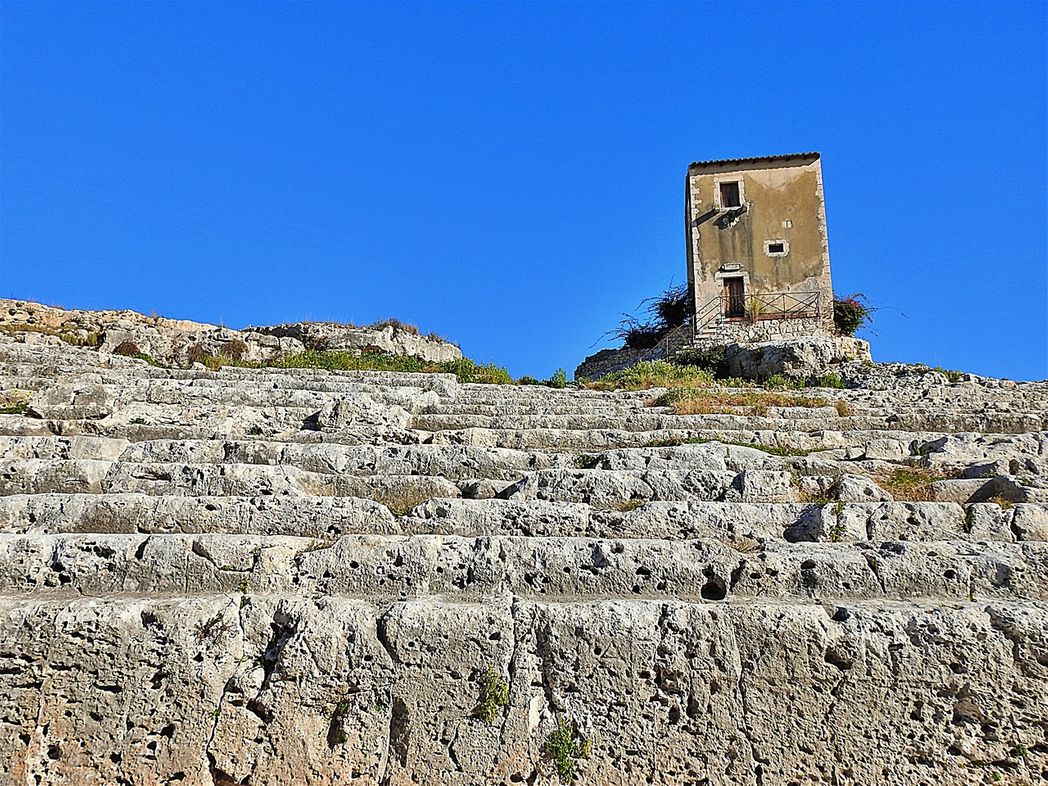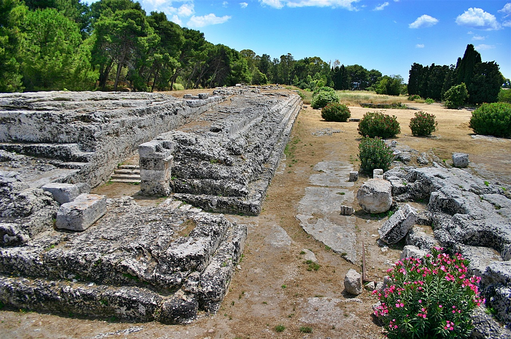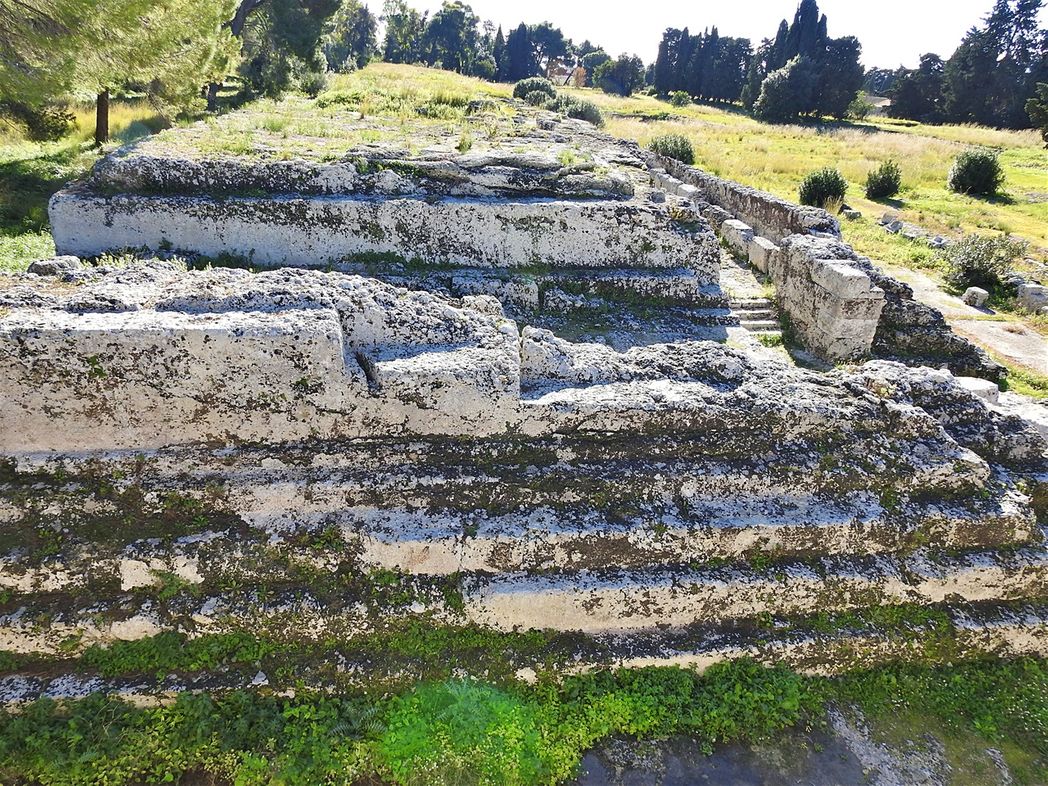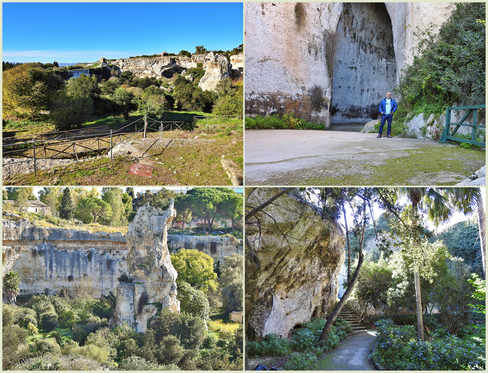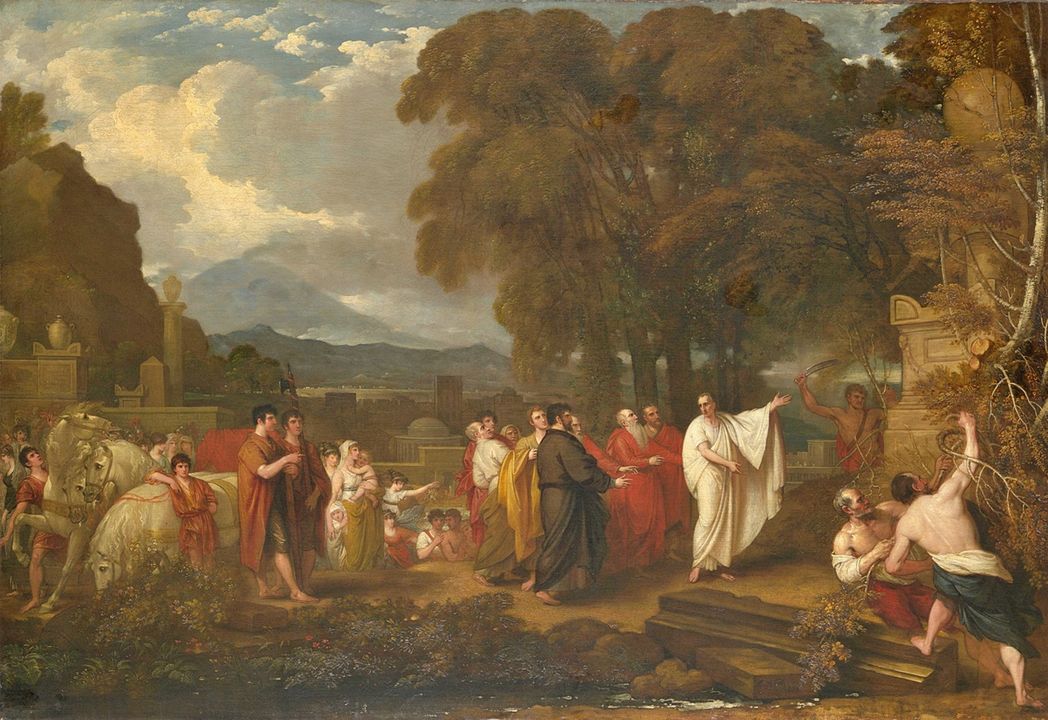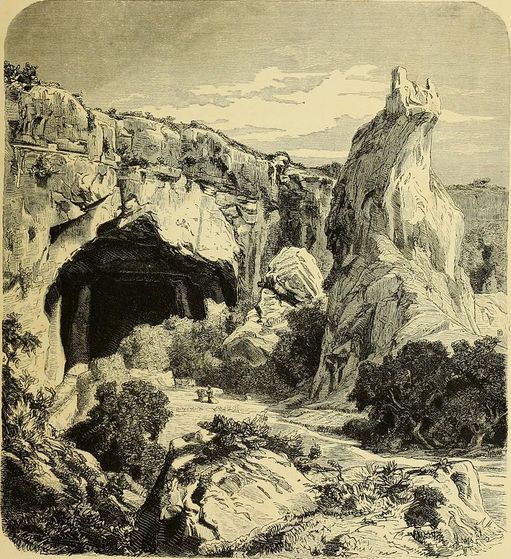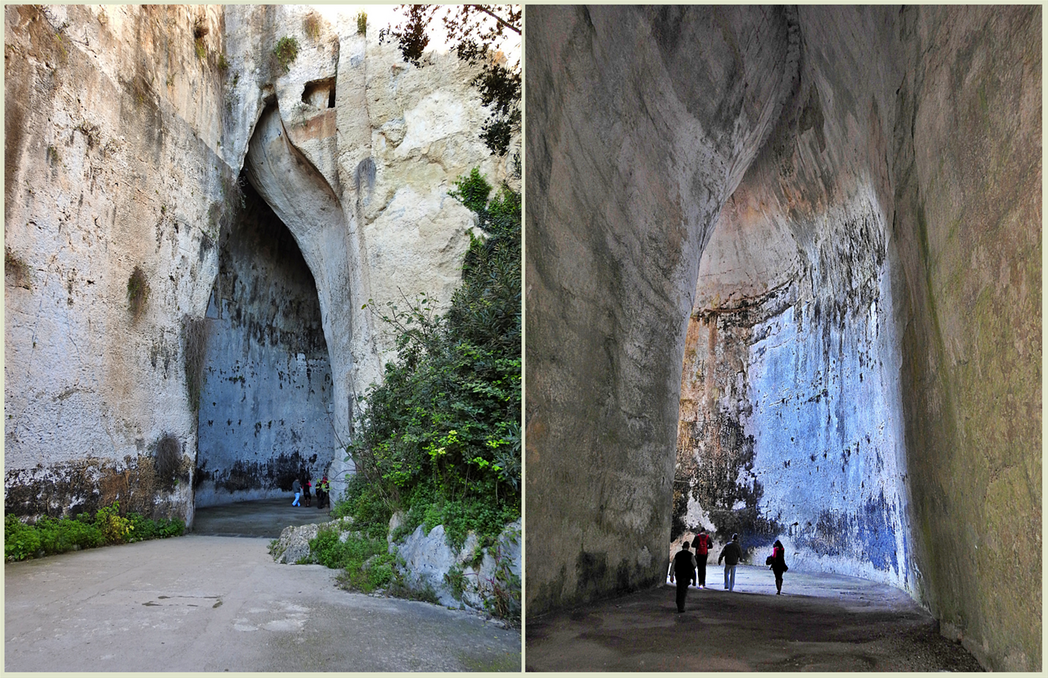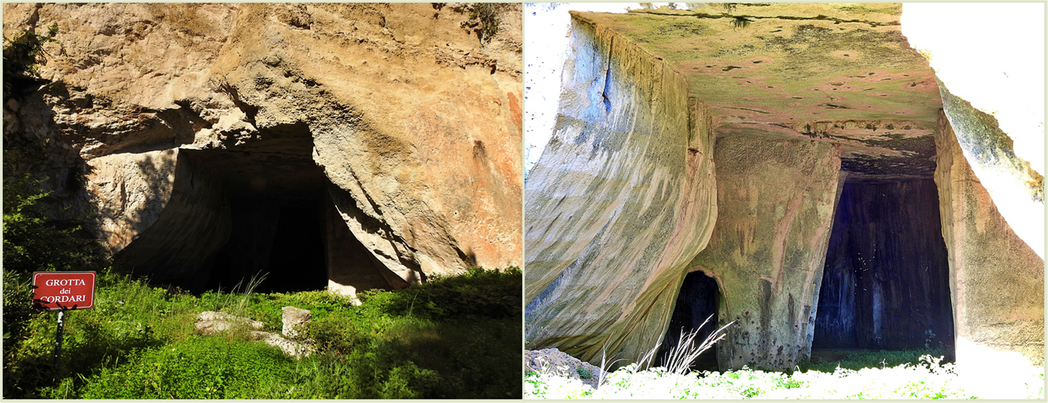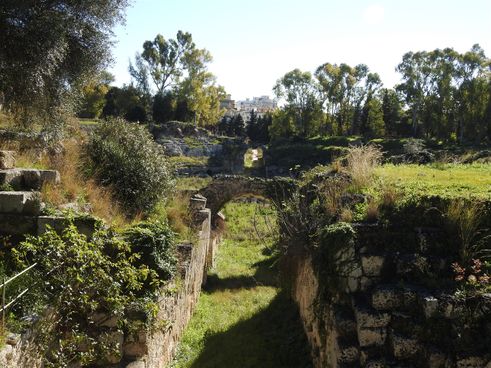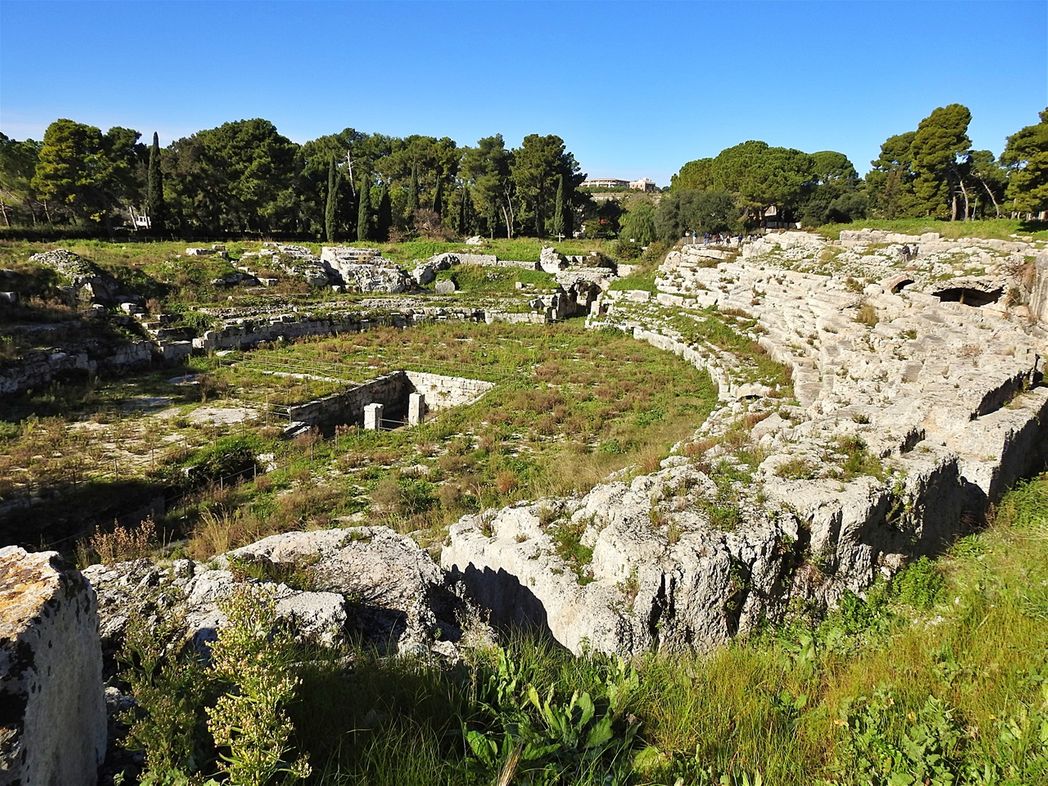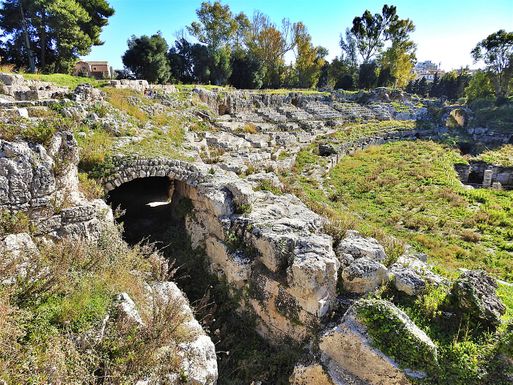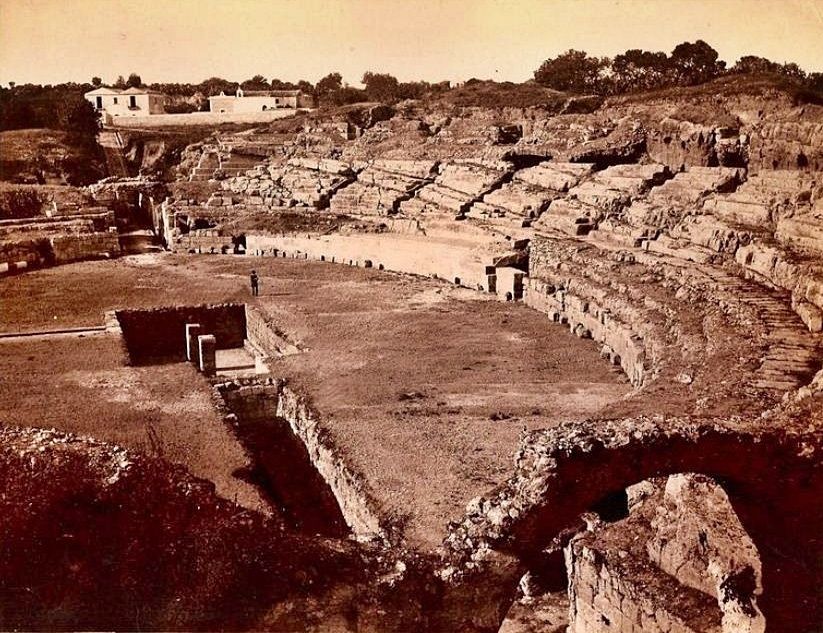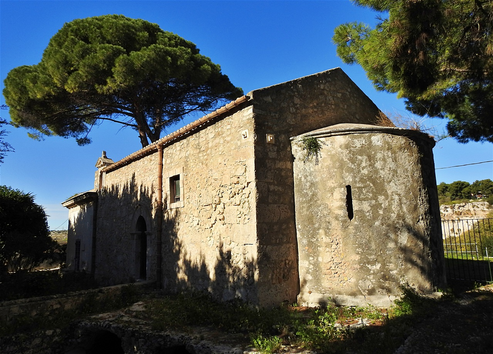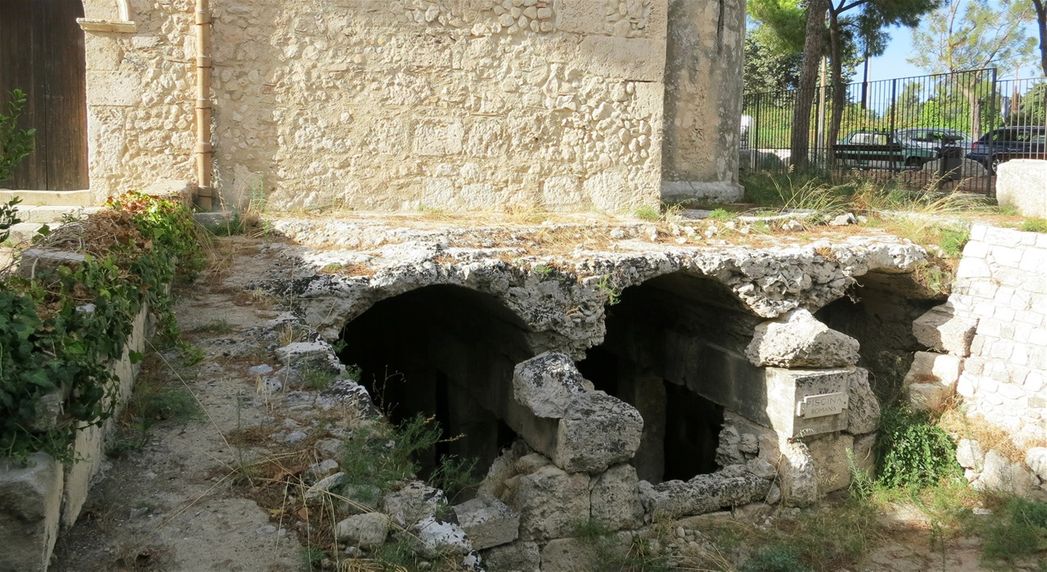Introduction/History Highlights
Syracuse (Siracusa - Συράκουσαι) is notable for its rich Greek history heritage, the baroque architecture, and as the birthplace of the preeminent Greek mathematician and engineer Archimedes. The city was founded by ancient Greek Corinthians in 734 BC and became a mighty city-state. Syracuse was allied with Sparta and Corinth and exerted influence over the entirety of Magna Graecia, of which it was the most important city. Described by Cicero as "the greatest Greek city and the most beautiful of them all", it equaled Athens in size during the fifth century BC.
Typical Sicilian baroque window.
Later it became part of the Roman Republic and the Byzantine Empire. Syracuse is mentioned in the Bible in the Acts of the Apostles book at 28:12 as Paul stayed there. The city's patron saint is Santa Lucia, who was born in Syracuse and died in 304 AD during the Diocletianic Persecution. Under Emperor Constans II, the city served as the capital of the Byzantine Empire (663–669). It was occupied by the Arabs for two centuries as part of the Emirate of Sicily. After this, Palermo overtook it in importance as the capital of the Kingdom of Sicily. Eventually, the kingdom would be united with the Kingdom of Naples to form the Two Sicilies until the Italian unification of 1865.
The city was struck by two ruinous earthquakes in 1542 and 1693 and a plague in 1729. The 17th-century destruction changed the appearance of Syracuse forever, as well as the entire Val di Noto, whose cities were rebuilt along the typical lines of Sicilian Baroque, considered one of the most typical expressions of art of Southern Italy.
Central Syracuse seen from Ortygia island. Mount Etna can be seen at the background smoking.
Orientation
Syracuse is located at the southeast corner of the island of Sicily, next to the Gulf of Syracuse at the Ionian Sea and only 65km south of Catania and its International Airport. The road from Catania is excellent, and the bus/car takes less than an hour to arrive in the city center.
Direct trains connect Stazione Catania Centrale with Stazione Syracusa. The journey lasts one and a half hours. The train station is located on the west of the old city and about 1.3km from Ortygia, the main tourist attraction. Taxis and buses are available, but walking does not take more than 15min. Moreover, the train station is 1.6km to the south of the Parco Archeologico Neapolis, which is the other important tourist destination of the city. In general, the city is flat, and one can easily walk from one attraction to the other. Usually, tourists visit Syracuse as part of a bigger Sicilian tour or a day excursion from Catania.
Suracuse on the map. Left inset: Parco Archeologico Neapolis. Right inset: island of Ortygia.
If you have just one day or less to spend in Siracusa, I recommend spending about 2 hours at the Archaeological Park (Parco Archeologico della Neapolis) and the rest of your time on the island of Ortygia. Both are not to be missed and will give you a great sense of the over 2,700 years of history that have helped shape this corner of Sicily.
A STROLL AROUND NEAPOLIS
Parco Archeologico Neapolis on the map. The red line shows a possible walk in the park. On the right a topographic plan of the archeological site (ΤΕΜΕΝΙΤΗΣ=Temenite, ΝΕΑΠΟΛΙΣ=Neapolis).
The Parco Archeologico Neapolis occupies a big area at the southern foothills of Temenite Hill. It corresponds to a small part of the ancient Greek and Roman quarter of Neapolis of Syracuse (from the Greek "Νεά πόλις" = "New Town").
Temenite Hill (Τεμενίτης Λόφος) used to be the heart of the public activity of the ancient Greek colony of Syracuse. Visiting this great historical and natural area, one can understand the grandeur of the Greek city.
Some meters after the entrance to the archeological park, you will find the ticket booth. Be sure to hang onto your ticket when going from one place to the other, as there are two different ticket checkpoints (just to make life complicated): one entering the Greek theater/latomia and one entering the Roman amphitheater.
The entrance to the "Parco archeologico della Neapolis".
The cafe in the archeological site.
Opening times: every day 8:30 – 19:30 (more or less ... this is Sicily 😀).
Full price single ticket: 10,00 €.
There is a refreshments café adjacent to the ticket booth.
The Greek Theater seen from the north (top of the Temenite hill).
Greek Theatre (Teatro Greco)
On the highest point of the Temenite hill is the Greek Theater (Teatro Greco), where classical plays are still performed. Overlooking the city, the Greek Theater is the largest example of the theater architecture of the Greek West. Constructed in the 5th century BC, this wonderfully preserved theater has remained in remarkable condition and appears today much as it did centuries ago. It has the peculiarity of being almost entirely carved in stone. In addition to the performances, the theater was used for popular assemblies. After being adapted in imperial times to the circus games, the theater was abandoned.
The Greek Theater seen from the west.
Greek Theatre (Teatro Greco) seen from the east. The scene building is entirely destroyed and only the cuttings in the bed rock for its foundations are now visible.
The excavations, which began in the late 18th century and continued throughout the following century, were completed only in the mid-20th century. On the genesis of the monument, there are different opinions. Still, it is generally agreed that the current shape dates back to the restoration of the years 238-215 BC, during the reign of Hiero II. Today, the scene building is destroyed, and only the cuttings in the bedrock for its foundations are now visible.
Kostas and the Greek Theater.
Teatro Greco by Giorgio Sommer (circa 1880). Part of the Galermi aqueduct can be seen on the right.
At the top of the theater, there is the Terrace of Temenite Hill, a flat area where one can see some manufactured structures, among which is the Grotta del Ninfeo, the Via dei Sepolcri, as well as the casetta dei Mugnai, identified as the last remaining mill on the Temenite hill.
The Terrace of Temenite Hill.
Via dei Sepolcri
The Via dei Sepolcri (road of the tombs) is a 150 meters long road that leads to the top of Colle Temenite. Entering the road, one can see the high rocky walls surrounding it on both sides and the votive shrines that have been dug all along the way. These are shrines made to celebrate the heroes of the city. Syracuse, like all Greek cities, practiced the cult of heroes. As heroes had particularly distinguished themselves in life, they deserved to be honored and revered. This was very important for the Greek religion.
At the left of the picture is the beginning of Via dei Sepolcri. The several holes on the walls are tombs/shrines.
Once up the Via dei Sepolcri, you will come to the top of the Hill. Here are the remains of the Sanctuary of Apollo Temenite (Greek word "Temenos" means "sacred enclosure"), which gives its name to the whole Hill.
The Grotta del Ninfeo (the nymphaeum grotto).
Grotta del Ninfeo
The Grotta del Ninfeo (the nymphaeum grotto) is located at the center of the Terrace of Temenite Hill. This manufactured cave is the largest of all in the area. There were statues dedicated to the Muses at the entrance, three of which (dated to the 2nd century BC) are still preserved and are on display at the "Museo Archeologico Regionale Paolo Orsi". Inside the cave, a fountain is dedicated to the Ancient Greek cult of the nymphs, nature goddesses. The name nymphaeum derives from this.
The Syracusan nymphaeum is thought to have been the ancient location of the Mouseion (the sanctuary of the Muses), the seat of the artistic guild, where the Syracusan actors gathered before descending into the theatre to put on comedies and tragedies in the time of Epicharmus and Aeschylus.
The grotto has a vaulted ceiling, and inside it, there is a rectangular tub in which the water is collected before cascading from a cavity located at the bottom of the rock wall. The water that flows into the grotto derives from two separate aqueducts, both of Greek date; one is called the Acquedotto del Ninfeo (Nymphaeum Aqueduct), while the other is the Galermi Aqueduct. Next to the entrance, some votive aedicula (votive little shrines) were used for hero cults. To the east of the grotto, the last watermill from the Spanish period remains visible even today. It took water from the grotto and redirected it into the theatre after using it to mill grain.
The fountain inside the Grotta del Ninfeo.
"Grotta del Ninfeo" by Jean-Pierre Houël.
During one of his trips to Syracuse in the second half of the 1700s, the painter Jean-Pierre Houël depicted the Grotta del Ninfeo as he found it.
The gouache shows a much deeper grotta than today, with water descending towards the theatre, where the mills were installed.
In the grotta, some women are busy making cloth.
Mulini di Galerme
The Mulini di Galerme (Mills of Galerme) was a complex of water mills placed above the cavea of the Greek Theater, dating back to the late medieval period. They take their name from the Galermi aqueduct. Of this complex today, only the so-called millers' house (La casetta dei Mugnai) has remained, a sort of tower. Under the intact house, a funerary cave was found, dating back to the Sicilian period; an important finding since it confirms that the relief of the Temenite was frequented already in the pre-Greek era.
La casetta dei Mugnai.
La casetta dei Mugnai. The cavea of Teatro Greco seen in the foreground.
Altar of Hiero II (altare di Gerone II)
To the south of the theater stands the Altar of Hiero II (altare di Gerone II). A great sacrificial altar, commissioned by the tyrant Hiero II, where 450 bulls could be sacrificed at one time. This giant altar built in the 3rd century BC is probably dedicated to Zeus Eleuterio. What remains of it is the base section, built into the rock. Like other monuments of the classical age, the highest part was looted by the Spanish in the 16th century, who used the blocks already squared to build up the fortifications of Ortygia.
Altar of Hiero II (altare di Gerone II).
The sacrificial animals accessed the altar via two ramps that faced north and south, while at the center, there was another raised area where sacrificial fires were lit. The vast square in front was enclosed by a large portico (14 columns on the short sides and 64 on the long sides), at the center of which stood a large fountain with a stand that was thought to support a statue.
Altar of Hiero II (altare di Gerone II).
Latomia/Orecchio di Dioniso
East of the theater stand the Latomia, deep stone quarries where the vegetation alternates with rocks dug by men and erosion caused by weather conditions. If you do not enough time, most probably you will visit only the Latomia of Paradise (Latomia del Paradiso), which is adjacent to the east side of the theater. This latomia is the biggest and the most beautiful, as it has been shaped into a shady garden. Further to the east, there are more latomia, the Grotticelle Necropolis, and the supposed tomb of Archimedes.
Latomia del Paradiso.
"Cicero Discovering the Tomb of Archimedes", by Benjamin West (1804).
Latomia del Paradiso. Image from the book "Italy from the Alps to Mount Etna" (1877).
Latomia of paradise today is a charming and delightful place; originally, it was an immense stone quarry mostly covered and subterranean. According to the story of the ancient historians, the latomia were also used as a place of isolation. The greater curiosity of this place is a bizarre, artificial limestone cave with surprising acoustic effects. The slightest hiss echoes inside the cave, and it is repeated and blown out of proportion. These phenomena, as well as its similarity to the human ear canal, have given rise to the legend that the cavern was dug from the tyrant Dionysius I to lock up political opponents and dissidents and overhear their speeches. The so-called Orecchio di Dioniso is 23 meters high and extends 65 meters back into the cliff. Horizontally, it bends in an approximate "S" shape. Vertically it is tapered at the top like a teardrop.
Go all the way to the end of the cave. It gets pretty dark in there, so use your cellphone flashlight to move around. This cave was dug in Greek times as water storage for Syracuse.
Orecchio di Dioniso (the outside on the left and the inside on the right).
The cave was widely known as "Cave that speeches". The name Ear of Dionysius (Orecchio di Dioniso) was given by the painter Michelangelo da Caravaggio, who in 1608 visited the Syracuse latomia after the mathematician, antiquarian, and archaeologist Vincenzo Mirabella took him to visit the grotto.
On the right of the Orecchio di Dioniso, there is the Grotta dei Cordari (Rope Makers Cave), which was not open to the public during the period I visited.
Grotta dei Cordari.
Roman amphitheater (Anfiteatro Romano)
The Romans and the Normans also left their traces in this park. To the south, among the pomegranate trees, stands the Roman amphitheater (Anfiteatro Romano). Although the Roman Amphitheater is not as well preserved as its Greek neighbor, it is still a sight to behold and should not be overlooked. Dating back to the early imperial age, the amphitheater is one of the greatest buildings of this kind in existence. The amphitheater is largely excavated out of the rock, and in the northeast, it takes advantage of the slope of the same rocky outcrop which the Greek theatre is built into.
The central axis of the amphitheater from the north entrance to the south one.
Almost nothing of the superstructure built from masonry survives due to the 16th-century Spanish devastation. The structure has monumental dimensions, measuring around 140 meters in length and 119 meters in width.
The Roman Amphitheater.
The Roman amphitheater. The vaulted corridor under the cavea, through which gladiators entered the arena.
There were two entrances into the arena: the Main one (North), was connected to a large yard to house the chariots of the audience. In the garden, next to the main entrance, are accommodated some impressive sarcophagi. There was a complicated system of steps that led from the upper levels to the exterior. At the center of the arena, there was a rectangular pit, which was originally covered. An underground passage ran from this pit to the entrance at the southern end of the amphitheater. This pit and passage were necessary for machinery used during the shows.
Picture of the Roman Amphitheater by Giorgio Sommer (circa 1880).
The seating in the cavea is separated from the arena itself by a high platform, under which was a vaulted corridor through which gladiators entered the arena. Above this were the front seats, which were reserved for high-ranking individuals.
In the garden, next to the main entrance of the amphitheater are accommodated some impressive sarcophagi (left). Part of the upper east cavea remains (right).
Chiesa San Nicolò ai Cordari
At the entrance of the archeological park, there is the Chiesa San Nicolò ai Cordari. The Church owes its name to the artisan manufacturers of ropes to which this was given in 1577. Built in the eleventh century, under the Norman domination of Sicily, it is one of the first churches built after the expulsion of the Arabs and the restoration of the Christian faith. The small (16x8m), single-nave church is partly built on an existing building, a Roman age pool carved into the rock.
Chiesa San Nicolò ai Cordari.
First used as a water tank and connected to the water system of the Roman amphitheater, in the Byzantine period, the pool was transformed into an underground church and later used as the crypt of the above church.
The Roman pool under Chiesa San Nicolò ai Cordari.
In part II of my trip to Syracuse, you will walk around the island of Ortygia (click on the name)


